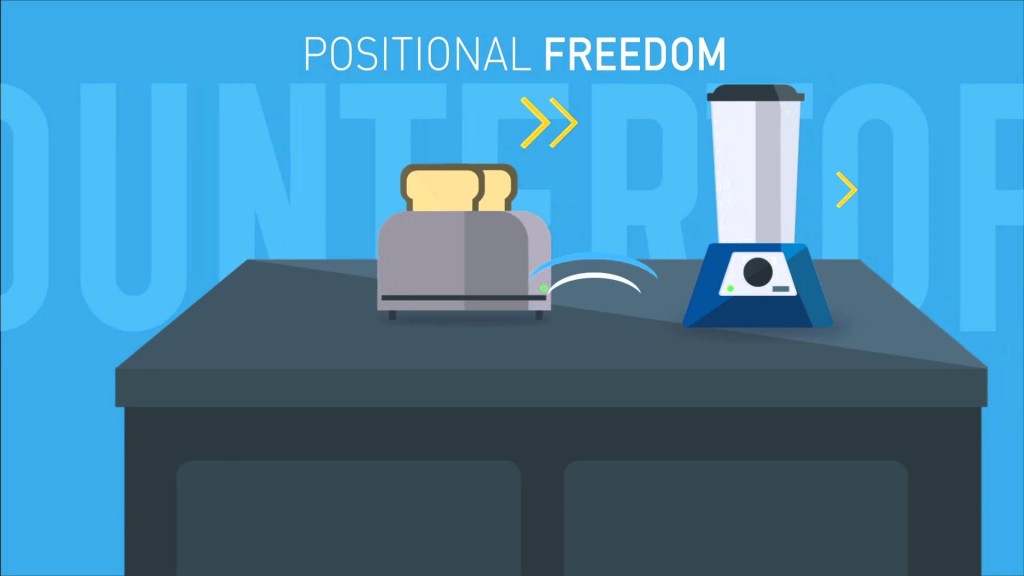Brusa, a major supplier of electric car charging units to OEM automakers, has just licensed WiTricity’s patent portfolio. WiTricity makes technology for wireless charging of devices – like cell phones – to “cut the charging cord”. Supposedly the company founder had a Eureka Moment one night when his cell phone woke him up to say it was almost discharged, because he’d forgotten to plug it in. Realizing there is electricity everywhere, he thought the cell phone should take care of charging itself, and set off on a journey to make it happen.
Is laziness the mother of invention? For those of us who can’t remember to plug in & recharge our car or cell phone or whatever, wireless charging is a solution. But it’s not just about laziness because there are a few scenarios where wireless charging is exactly the right solution – such as a bus driving a fixed route, where a charging pad at every bus stop would let the bus drive all day long, and wireless charging means the driver can focus on handling passengers while still ensuring the bus is kept charged all day long.
A brief scan of WiTricity’s website shows that they develop technology and license patents. The only products shown on the WiTricity website are evaluation kits for R&D teams, with the goal being for corporate partners to pay licensing fees.
The WiTricity WiT-3300 evaluation kit![]() is set up for 3.3 kiloWatt charging rate on electric cars, which they claim is “the same 3.3kW charge rate as many wired chargers”. Uh… most of the current crop supports 6+ kiloWatts charging rate …
is set up for 3.3 kiloWatt charging rate on electric cars, which they claim is “the same 3.3kW charge rate as many wired chargers”. Uh… most of the current crop supports 6+ kiloWatts charging rate …
The basic idea of wireless charging is to have two electromagnetic coils. One coil is the sender, and creates an electromagnetic field that causes electrical power to transfer from the sending coil to the receiving coil. WiTricity’s website says their technology runs at 90% efficiency. A video is shown below.
The technology is applicable to much more than cell phones and electric cars. Their website names off industrial, medical (e.g. medical implants) and military uses as well.
The press release![]() says BRUSA’s goal is “to commercialize efficient, high-performance wireless charging systems for carmakers that will enable next generation electric vehicles (EVs) and plug-in hybrid electric vehicles (PHEVs) to charge effortlessly by simply parking over a BRUSA wireless charging pad.”
says BRUSA’s goal is “to commercialize efficient, high-performance wireless charging systems for carmakers that will enable next generation electric vehicles (EVs) and plug-in hybrid electric vehicles (PHEVs) to charge effortlessly by simply parking over a BRUSA wireless charging pad.”
Hey, BRUSA, you’d better work out how to support much more than a 3.3 kiloWatt charging rate! That’s so 2011. Next Generation Electric Vehicles need to support fast charging, as Tesla Motors is demonstrating so well.
Another issue is that WiTricity appears to only support one-way power transfer. Bi-directional power flow at the charging station is a big research topic, with lots of interest, so that electric cars can partake in smart grid services.
“During the past year, several leading European and Japanese carmakers have publicly announced plans to introduce wireless charging for next-generation electrified vehicles,” said WiTricity CEO Alex Gruzen. “BRUSA is well positioned to be a Tier 1 supplier to these carmakers, and we look forward to the introduction of vehicles equipped with BRUSA wireless charging systems.”
- Is there enough Grid Capacity for Hydrogen Fuel Cell or Battery Electric cars? - April 23, 2023
- Is Tesla finagling to grab federal NEVI dollars for Supercharger network? - November 15, 2022
- Tesla announces the North American Charging Standard charging connector - November 11, 2022
- Lightning Motorcycles adopts Silicon battery, 5 minute charge time gives 135 miles range - November 9, 2022
- Tesla Autopilot under US Dept of Transportation scrutiny - June 13, 2022
- Spectacular CNG bus fire misrepresented as EV bus fire - April 21, 2022
- Moldova, Ukraine, Georgia, Russia, and the European Energy Crisis - December 21, 2021
- Li-Bridge leading the USA across lithium battery chasm - October 29, 2021
- USA increasing domestic lithium battery research and manufacturing - October 28, 2021
- Electrify America building USA/Canada-wide EV charging network - October 27, 2021












